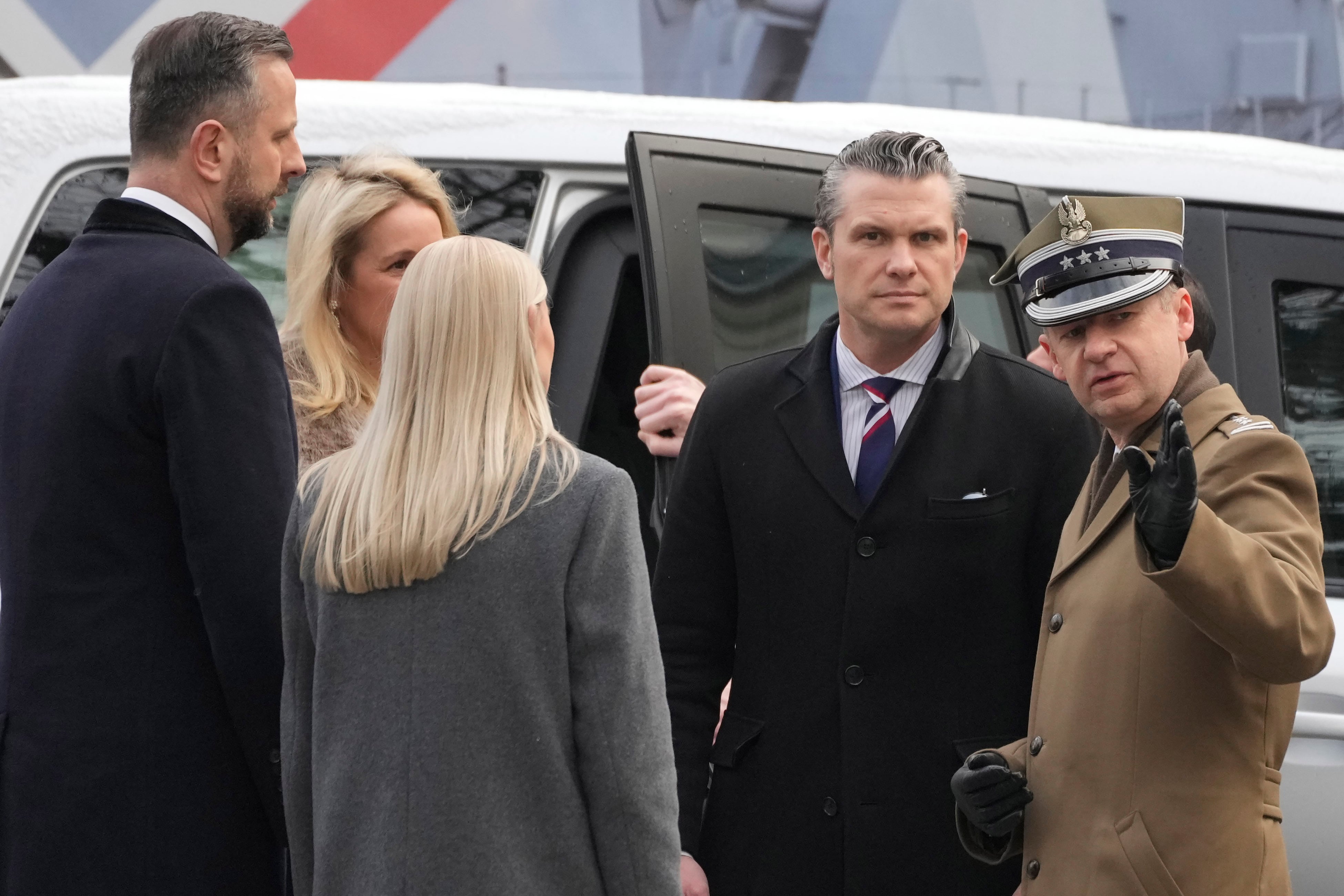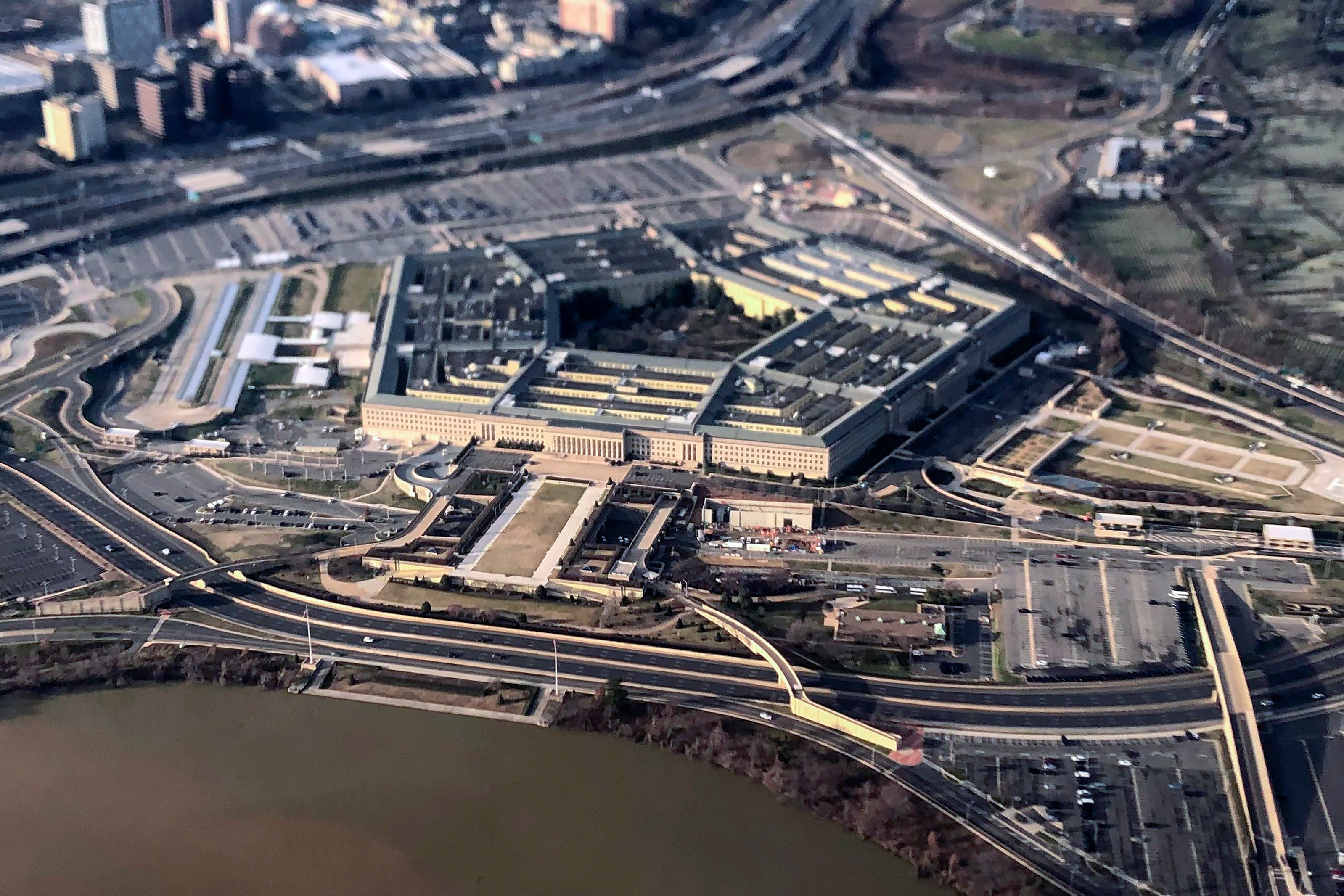For U.S. Army Alaska's largest exercise in 15 years, the Army called on its "combat training center on wheels" to help.
The Hawaii-based Joint Pacific Multinational Readiness Capability is an exportable combat training center capability — a complex system of computers, towers and observer/controller/trainers designed to train brigades at their home stations.
"It's like the combat training centers, but we're on wheels," said Mike Schaefer, the program manager for the JPMRC. "We bring the training to the units wherever they are."
In this case, the JPMRC went to Alaska for Arctic Anvil 2016, a massive training event featuring the 1st Stryker Brigade Combat Team, 25th Infantry Division; about 900 troops from the Iowa Army National Guard's 1st Battalion, 133rd Infantry Regiment; about 130 soldiers from 1st Battalion, Princess Patricia's Canadian Light Infantry; almost 480 soldiers from the 17th Combat Sustainment Support Battalion; and hundreds more enablers.
In all, about 8,000 personnel participated in the exercise.
In addition to preparing the 1st Stryker Brigade for its upcoming rotation at the National Training Center at Fort Irwin, California, Arctic Anvil also was one of the Army's first so-called reverse Pathway events, part of U.S. Army Pacific's successful Pacific Pathways program.
Pacific Pathways employs a single unit through what officials call a "training pathway." This unit spends three to four months in a series of already approved, consecutive bilateral and multilateral exercises and engagements with foreign militaries.
In a reverse Pathway, troops from partner militaries come to the United States to train. This summer, instead of sending soldiers to Singapore, Japan and Canada, troops from those countries will train with U.S. forces in Hawaii, Washington State and Alaska.
Planners for U.S. Army Alaska began working on the exercise last summer, said Maj. Denis Wagner, a simulation operations officer for the command.
Troops and equipment began flowing into Alaska in mid-June and steadily built until the 12-day training event kicked off July 23 at Donnelly Training Area, about 120 miles from Fort Wainwright, Alaska.
As the primary training audience, the 1st Stryker Brigade faced a complex scenario as they battled a near-peer adversary, insurgents and narco-terrorists, all while dealing with the civilian population and the media, said Col. Scott Mitchell, commander of the 196th Infantry Brigade. The brigade executes the JPMRC on behalf of U.S. Army Pacific.
"This is a chance for them to get some repetitions with their mission command systems and command a brigade in the field against a free-thinking enemy," Mitchell said.
For Arctic Anvil, the Stryker brigade had to come to the aid of a friendly nation that had been invaded by "some rogue elements," he said.
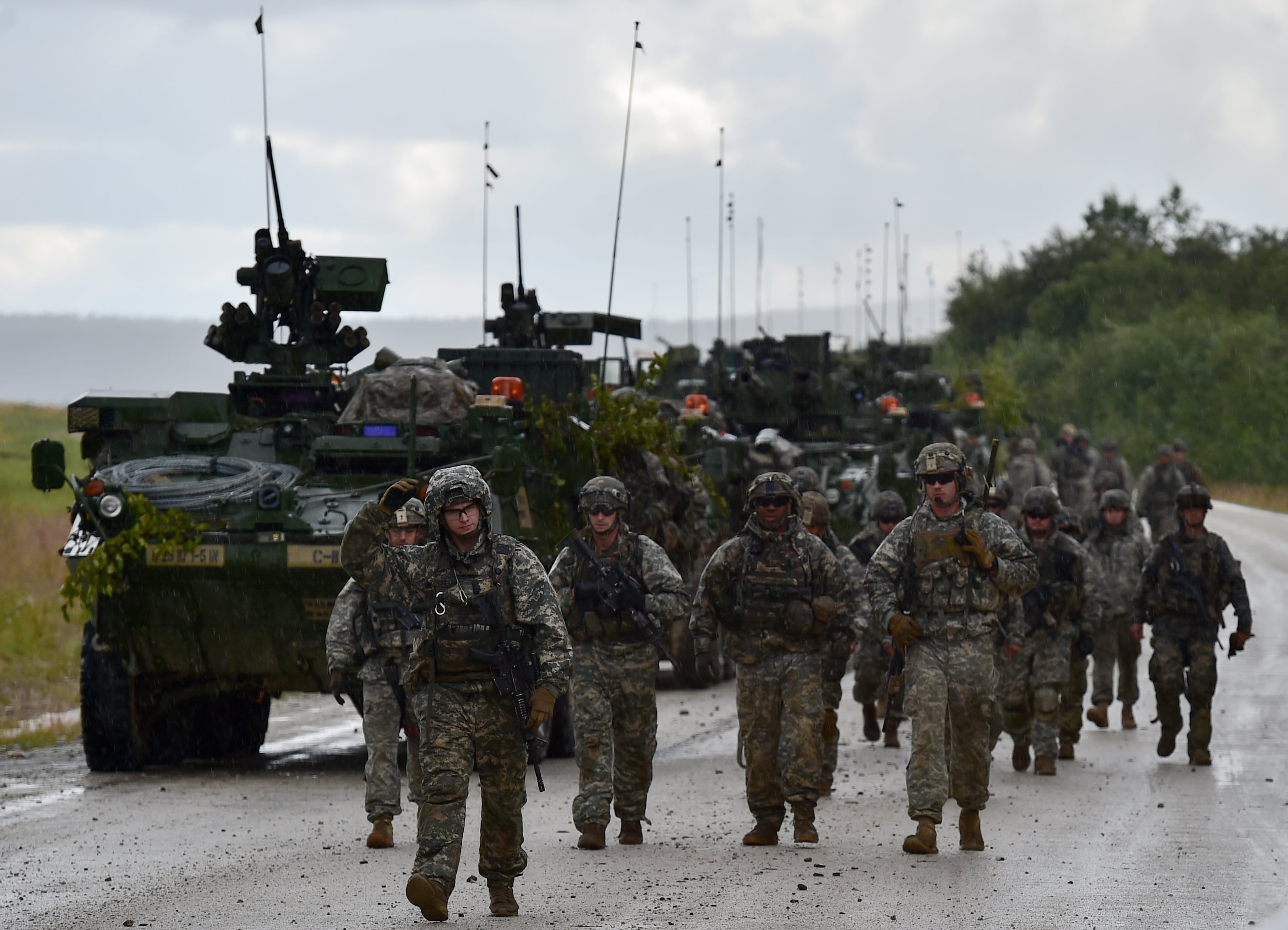
Soldiers assigned to 1st Battalion, 5th Infantry Regiment, 1st Stryker Brigade Combat Team, 25th Infantry Division, walk in the rain in the Yukon Training Area before a company live-five during Arctic Anvil 2016.
Photo Credit: Justin Connaher/Army
Soldiers from the brigade conducted force-on-force battles and company live-fire exercises, including one at nearby Yukon Training Area, with the Iowa Army National Guard soldiers playing the opposing force, Wagner said.
The JPMRC, which can be packed into 60 20-foot containers, provided the brigade with realistic and complex training it likely wouldn't have been able to pull off on its own, Mitchell said.
"It's really about the stress that you can put on a brigade commander and his staff, the battalion commanders and their staffs, that's unique about what we bring," he said.
The JPMRC also provides units with complex training without having to leave their families or ship their equipment across the country, said Command Sgt. Maj. Ken Killingsworth, the senior enlisted leader of the 196th Infantry Brigade.
"The great thing about the [combat training centers] and our capability is there's learning going on at the lowest level," Killingsworth said. "The individual soldier out there on the ground was learning to exercise his field craft, his warrior tasks and drills, and putting those into practice at the collective level."
The unit is so effective that the demand for it "only continues to go up," Mitchell said.
"We started in 2013 really developing this capability, and there's some amount of skepticism out there until we actually get there and really start the training, and then everybody understands the value we bring," he said.
Another key element of the exercise was integrating the company of Canadian infantry soldiers into the 1st Stryker Brigade.
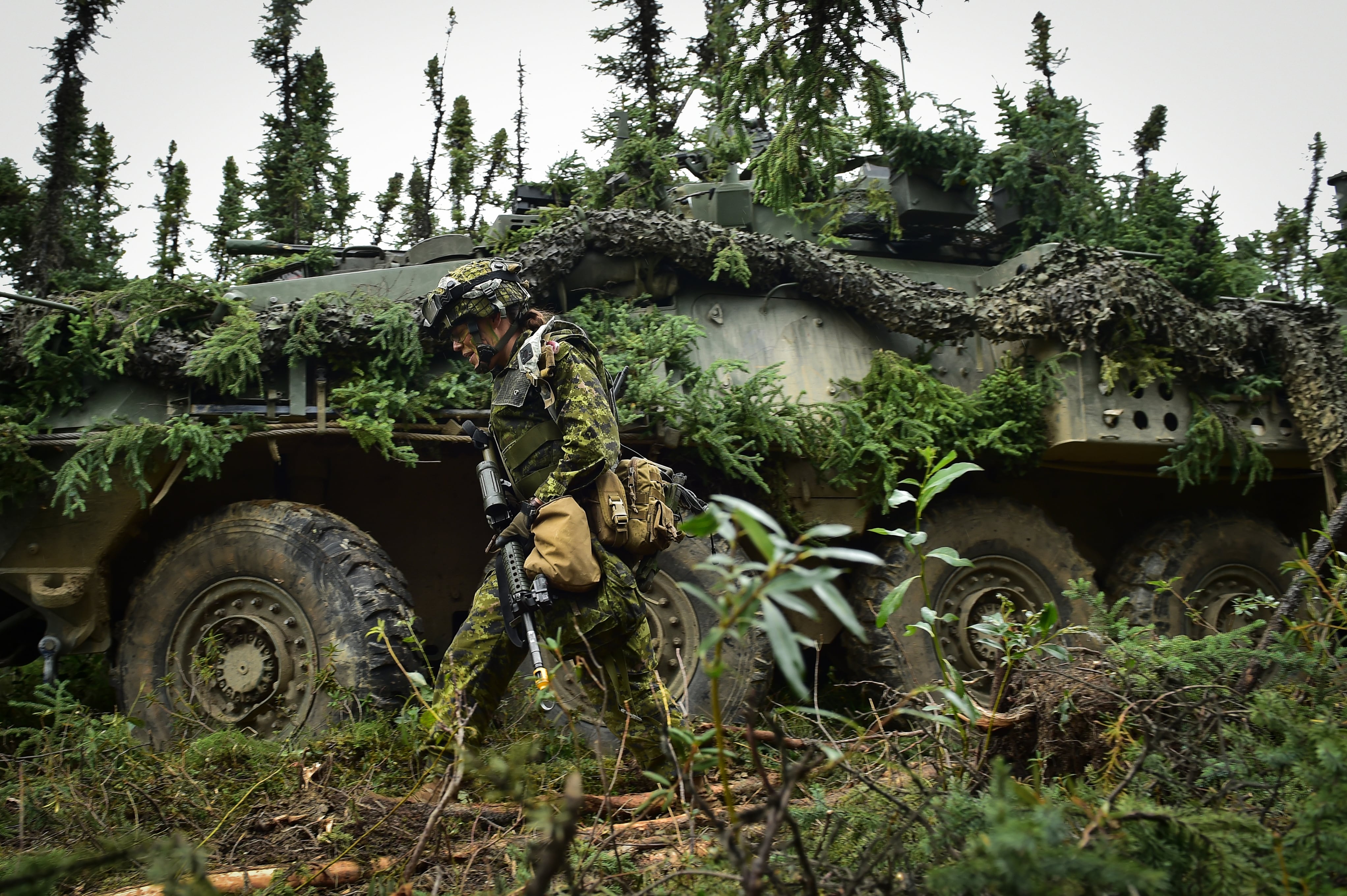
Canadian Army Maj. Chelsea Anne Braybrook, commander of Bravo Company, 1st Battalion, Princess Patricia's Canadian Light Infantry, walks past her Coyote Armoured Vehicle in Donnelly Training Area near Ft. Greely, Alaska, during Arctic Anvil 2016.
Photo Credit: Justin Connaher/Army
"We were able to provide the opportunity for them to come in, be integrated with a U.S. Stryker [unit] and participate in the force-on-force event and then transition them … to conduct a company-level live-fire on terrain they'd never trained on before," Wagner said.
The Army's Alaska-based aviators also got in on the action, providing UH-60 Black Hawks, CH-47 Chinooks and AH-64 Apaches for the force-on-force portion of the training.
To support all of that activity, the 475 soldiers from the 17th Combat Sustainment Support Battalion led the enabler effort to provide more than 550,000 meals, almost 195,000 gallons of fuel, nearly 52,000 gallons of aviation fuel, and about 232 short-tons of ammunition for the exercise.
Soldiers also planned and executed 43 air missions and 258 ground convoy missions, Wagner said.
"It is the most support moved for an exercise in Alaska, ever," Wagner said. "The whole CSSB was involved. [The battalion commander] put his complete battalion in the field and executed as he would if they were deployed."
Also involved in the exercise was 4th Brigade Combat Team, 25th Infantry Division, the other BCT stationed in Alaska. The brigade supported the 196th Infantry Brigade and the JPMRC, providing officers and senior noncommissioned officers to serve as observer/controller/trainers. The brigade also provided 66 Humvee-type vehicles for the 196th Infantry Brigade to use so the OCTs could move around the battlefield, Wagner said.
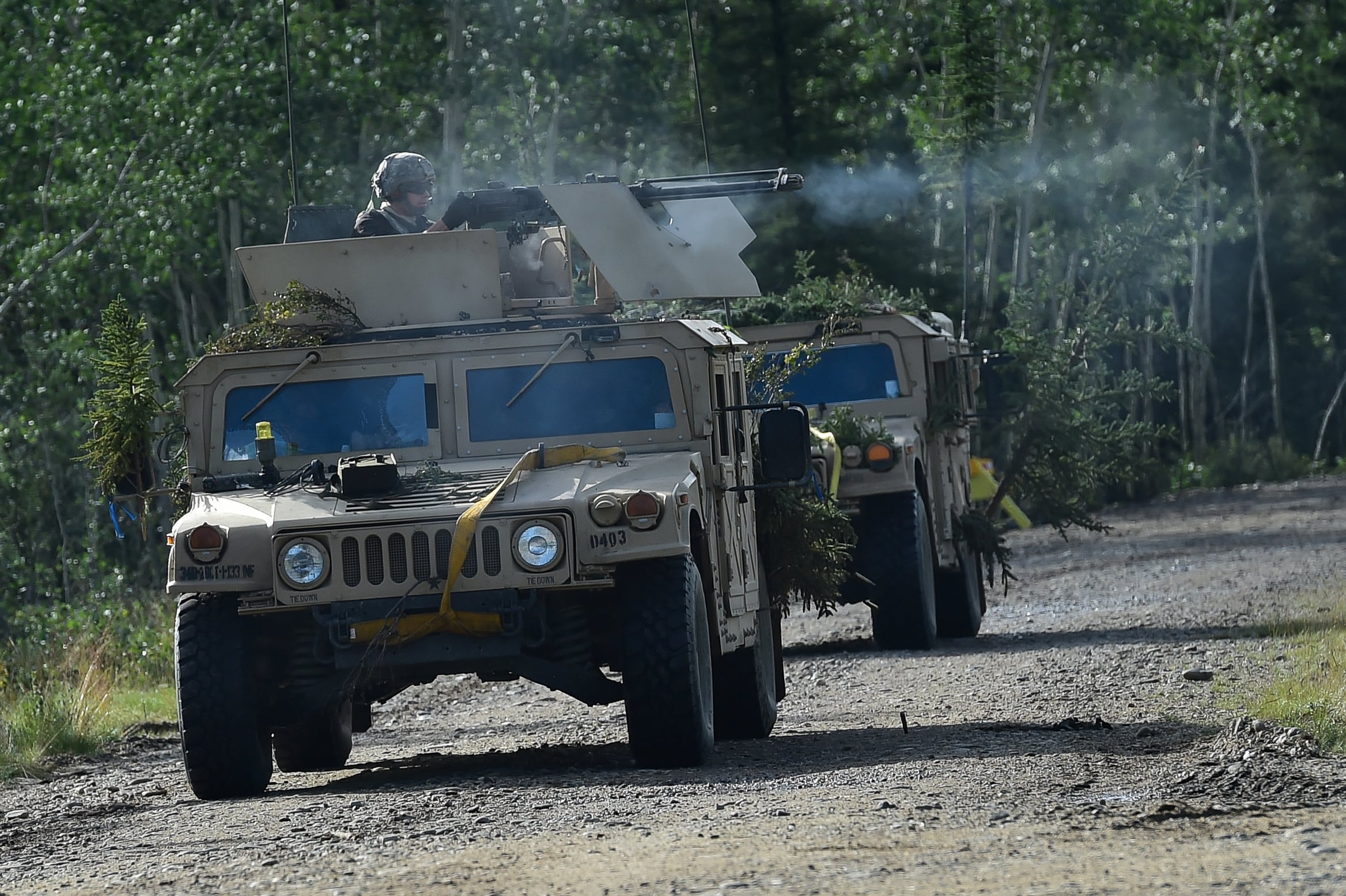
Opposing Forces attack soldiers assigned to A Company, 1st Battalion, 24th Infantry Regiment, 1st Stryker Brigade Combat Team, 25th Infantry Division, during Arctic Anvil 2016.
Photo Credit: Justin Connaher/Army
As the exercise culminated Aug. 3 and commanders gathered in the days that followed for the after-action reviews, Wagner said Arctic Anvil was a success.
He cited as an example the brigade's final AAR.
"I sat through it because it's an excellent opportunity to gauge the training," Wagner said. "Based upon the discussion, there was no need or really any reason for the moderator of the AAR to have to prod people to talk. Commanders were talking back and forth and identifying the things they want to work on."
The exercise was so well received that there already are plans to do it again next year.
"As we talk about readiness and the value of this, I don't know if you can place a value on this," Wagner said. "I can tell you that about two or three days into this, [senior leaders] were already wanting to do this every year."
Wagner specifically lauded the 196th Infantry Brigade and the JPMRC for the value they added to Arctic Anvil.
"That capability is not something a division could replicate on its own," he said. "It's a great training capability. As we in the Army continue to train for whatever the country needs us to do, it's training at home station. What JPMRC and the 196th Brigade did was allow us to put and develop a more complex environment to allow that brigade to train more effectively."
Michelle Tan is the editor of Army Times and Air Force Times. She has covered the military for Military Times since 2005, and has embedded with U.S. troops in Iraq, Afghanistan, Kuwait, Haiti, Gabon and the Horn of Africa.


